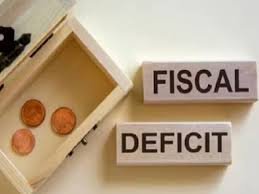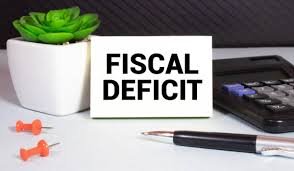India’s Fiscal Deficit for FY24: Government Data Analysis
Fiscal Deficit Overview
India’s fiscal deficit for FY24 improved to 5.6% of GDP, down from the Revised Estimates of 5.8%. This improvement was driven by higher-than-expected tax receipts. The fiscal deficit stood at Rs 16.54 trillion against the budgetary target of Rs 17.86 trillion, showcasing effective financial management by the government.
Tax Receipts and Expenditure
Net tax receipts surpassed projections, amounting to Rs 23.27 trillion. This robust collection was a significant contributor to the reduced fiscal deficit. Total expenditure for the fiscal year reached Rs 44.43 trillion, which is 99% of the budgeted amount, indicating disciplined spending by the government.
FY25 Fiscal Targets
Looking ahead, the government has set an ambitious target to reduce the fiscal deficit to 5.1% of GDP in FY25, equating to Rs 16.85 trillion. The long-term goal is to further lower the fiscal deficit to 4.5% of GDP by FY26, aiming for sustained fiscal consolidation.
Impact of RBI Dividend
The Reserve Bank of India (RBI) played a crucial role by transferring Rs 2.11 trillion as a surplus to the Union government. This unexpected windfall provides the government with additional fiscal leeway, potentially enhancing expenditures or allowing for sharper fiscal consolidation.
Revenue Dynamics
The efficiency of tax boards and the implementation of AI in tax collection systems have resulted in improved tax collections. Direct tax collections grew by 17.7% year-on-year to Rs 19.58 trillion, exceeding estimates. GST collections also saw a significant increase, growing by 11.7% to Rs 20.14 trillion for FY24.

Why this News is Important
Economic Stability
The reduction in India’s fiscal deficit to 5.6% of GDP indicates strong economic stability and effective financial management. This is crucial for maintaining investor confidence and ensuring sustainable economic growth, which are vital for students preparing for government exams to understand.
Policy Implications
Understanding the government’s fiscal policy and its implications on the economy is essential for aspirants of civil services, banking, and other competitive exams. The fiscal deficit figures and future targets provide insights into the government’s economic strategies and priorities.
Exam Relevance
For students preparing for exams like IAS, PSCS, and banking, knowledge of the fiscal deficit, tax collections, and expenditure patterns is vital. Questions related to economic policies, budgetary allocations, and fiscal targets frequently appear in these exams, making this news highly relevant.
Government Efficiency
The role of the RBI and the efficiency in tax collections highlight the government’s efforts in managing public finances. This information is critical for exams that test knowledge of public administration and governance.
Broader Economic Impact
Understanding the broader economic impact of fiscal policies helps students grasp the interconnectedness of various economic factors. This knowledge is crucial for writing analytical essays and answering interview questions in various government exams.
Historical Context
Previous Fiscal Deficit Trends
India’s fiscal deficit has been a subject of scrutiny over the years, with fluctuations due to varying economic conditions. Historically, the deficit has been influenced by factors such as global economic downturns, domestic policy changes, and external trade balances.
Impact of COVID-19
The COVID-19 pandemic had a significant impact on India’s fiscal health, with increased government spending on healthcare and social welfare leading to higher deficits. The current improvement in fiscal deficit reflects a recovery from the pandemic-induced economic strain.
Long-Term Fiscal Goals
The government’s long-term goal of reducing the fiscal deficit to 4.5% of GDP by FY26 aligns with historical efforts to achieve fiscal discipline. Previous efforts include the implementation of the Fiscal Responsibility and Budget Management (FRBM) Act aimed at maintaining a sustainable fiscal policy.
Key Takeaways from India’s Fiscal Deficit for FY24
| Serial Number | Key Takeaway |
|---|---|
| 1 | Fiscal deficit for FY24 improved to 5.6% of GDP. |
| 2 | Net tax receipts exceeded projections at Rs 23.27 trillion. |
| 3 | Total expenditure for FY24 was Rs 44.43 trillion, 99% of the budgeted amount. |
| 4 | RBI transferred a surplus of Rs 2.11 trillion to the government. |
| 5 | Government aims to reduce fiscal deficit to 5.1% of GDP in FY25. |
Important FAQs for Students from this News
What is India’s fiscal deficit for FY24?
India’s fiscal deficit for FY24 stands at 5.6% of GDP, an improvement from the Revised Estimates of 5.8%.
How did the government achieve a lower fiscal deficit in FY24?
The lower fiscal deficit was achieved through higher-than-expected net tax receipts, which amounted to Rs 23.27 trillion.
What role did the RBI play in FY24’s fiscal deficit?
The Reserve Bank of India transferred a surplus of Rs 2.11 trillion to the Union government, providing additional fiscal leeway.
What are the government’s fiscal deficit targets for FY25?
The government aims to reduce the fiscal deficit to 5.1% of GDP in FY25, with a long-term goal of reducing it to 4.5% by FY26.
Why is understanding fiscal deficit important for competitive exams?
Knowledge of fiscal deficit and related economic policies is crucial for exams like IAS, PSCS, banking, and others as they frequently feature questions on economic stability, policy implications, and fiscal management.
Some Important Current Affairs Links















